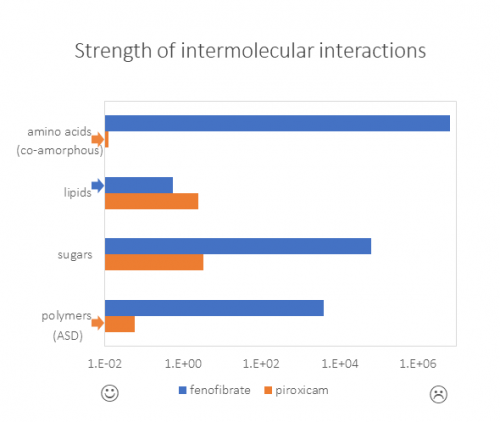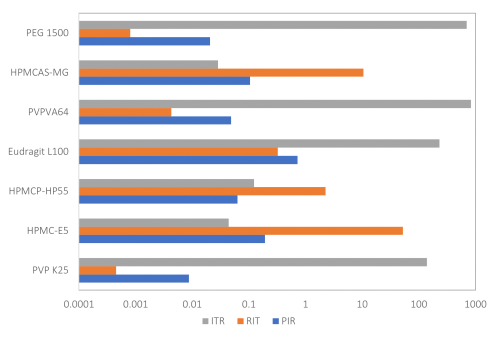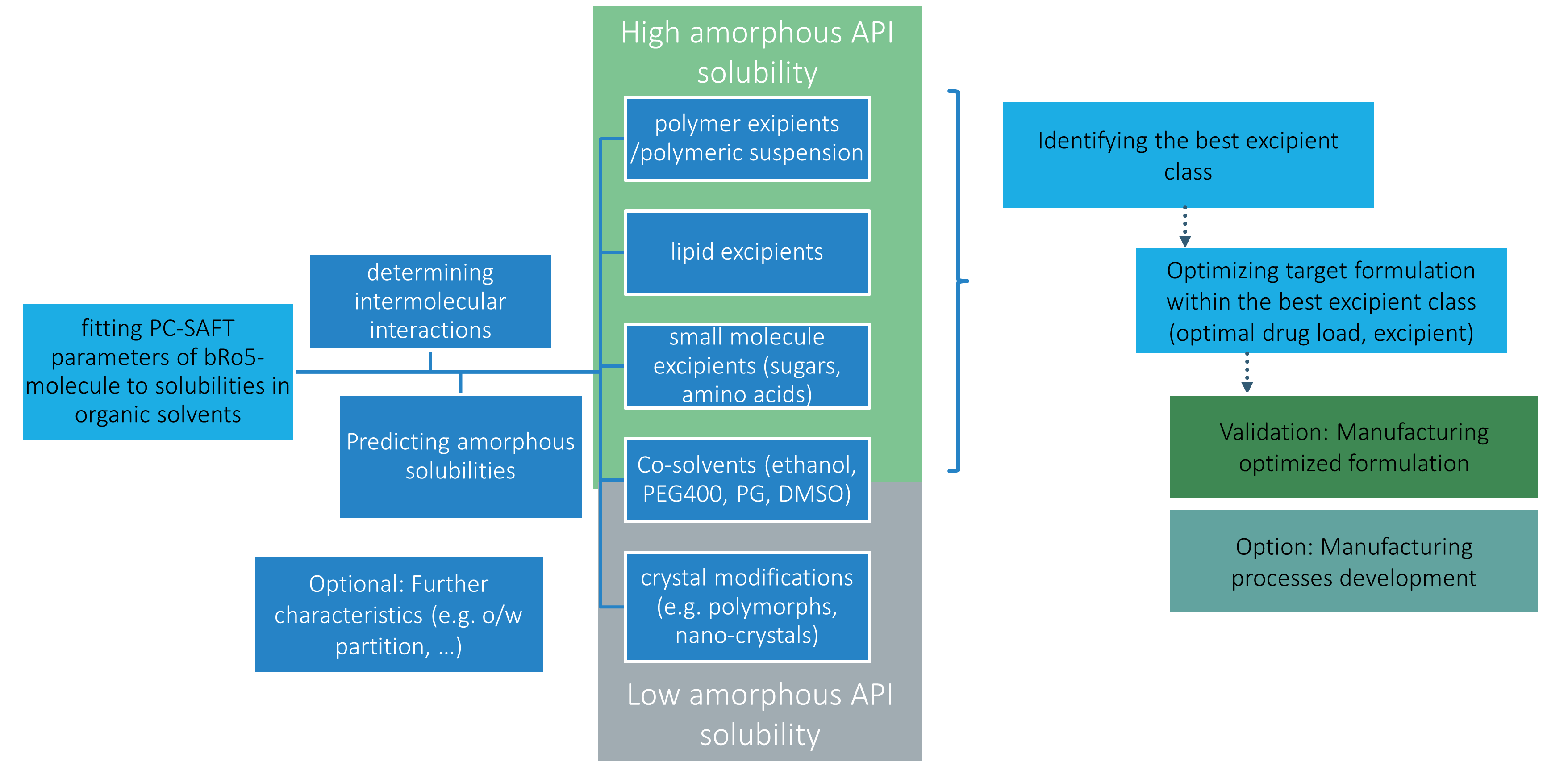Case studies - Early stage formulation screenings
Identification of stabilizing excipients for a formulation based on intermolecular interaction predictions.
Easy and scientific decision on the best enabling formulation technique (lipid-based formulation, co-amorphous formulation, ASD, …)
Project workflow
Training data
Collecting experimental data to characterize the intermolecular interaction strength of the API. Training data is easily assessible with few sample amount or already available (e.g. solubility data in organic solvents).
In-silico prediction
Deriving strength of the effective intermolecular interactions from the training data. Predicitve screening of intermolecular interactions in potential excipients.
Ranking and lead formulation
Defining most promising lead formulations. Validation of the most promising formulations via prototypes and avioding useless experiments.
Advantages
Time
Once the training data is available, in-silico prediction results are quickly available.
Material
Avioding big screening studies at early stages saves expensively synthesized early material. Generate more information with the few available milligrams!
Mechanistic understanding
Understanding of interaction strength at early stage allows scientifically more sound decisions.
Money
Reduced material consumtion and time for screenings is a direct monetary benefit for the formulation project!
Excipient class screenings
Which type of enabling formulation platform is the most promising one based on the intermolecular interactions – a classical amorphous solid dispersion or are there siutable alternatives (e.g. co-amorphous, lipid-based or sugar-based formulations)?

Identification of stabilizing excipients for a formulation based on intermolecular interaction predictions.
Easy and scientific decision on the best enabling formulation technique (lipid-based formulation, co-amorphous formulation, ASD, …)
The ranking example on the leftshows that fenofibrate is best stabilized by lipids (lipid-based formulations), piroxicam is best stabilized by amino acids (so-called co-amorphous formulations) and polymers (so-called amorphous solid dispersions).
Polymer screenings
Scientifically sound formulation descisions are possible: Determine the best stabilizing polymer for your individual amorphous solid dispersion.
The obtained rankings (as shown below) are full in-silico predictions and do not require additional experiments.

The ranking reveals:
- Itraconazole is best stabilized by HPMCAS, HPMC-E5 and HPMCP-HP55
- Ritonavir is best stabilized by PVP, PVPVA64 and PEG
- Piroxicam is best stabilized by PVP, PVPVA64 and PEG
The best stabilizing polymer differs from API to API. All potentially availabe polymeric excipients for ASD generation can be considered.
Validation measurements are available.
Preclinical formulations
Quickly develop a formulation for preclinical tox-studies. Ensure a high API bioavailability during the studies. Tailoring the optimal formulation for each specific API. Finding alternatives to co-solvents or other unwated excipients. Our systematic decision tree based on in-silico predictions leads to the optimal preclinical formulation!

